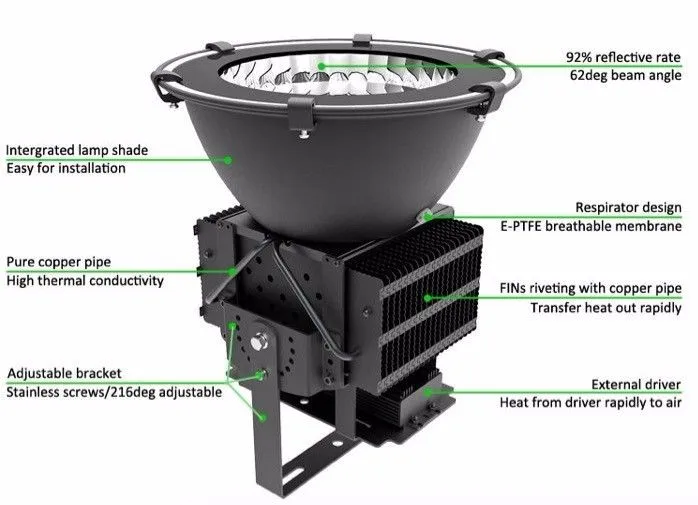LED runs cool is a misleading statement
LED runs cool is a misleading statement
I've heard this before. My simple question is "What excess heat?" CFLs run much cooler than incandescents. And LEDs even cooler.
Every bit of energy consumed turns into heat, but its a matter of where. LEDs dump considerably more portion of consumed energy through conduction than any other lighting technology.
"LED runs cool" is every bit as misleading as 1,000w water bed is cooler running than a 60W soldering iron.
More accurately, it's a design constraint that must be met in order to not fry delicate LEDs.
LEDs are just like computer chips. They have to be kept cool running with a heat sink in order to not fry them.
Tiny computers like your multimeter and basic phones don't need special thermal consideration. Slightly more power dense devices like your smart phones and lighting LEDs need a passive heat sink like a metal case. You need a huge heat sink or a fan for even higher power density stuff. Huge heat sinks are expensive and fans add another point of failure. Perhaps a significant hesitance to adding a fan is that it bruises the "LED is cool running" image.
Cooling requirement goes up:
as ambient temperature ^, tolerable temperature \/, power dissipation ^.
A 100W light bulb radiates most of consumed energy. Some by convection through internal gas. Very little conducted to socket.
A modern high performance CPU needs to dump about 100W all by conduction with the heat sink getting no hotter than about 160F. If you block the airflow, it burns out or it must performance to reduce heat output. If you remove the fan on a modern computer, it will run at full performance until it reaches the maximum temperature and backs off on performance to hold the temperature.
100W LED SSFLs have to reject like 60W from LEDs, and another 10-15W from directly attached phosphor blend. Of the 25W or so if input power that leaves as radiated energy, some are outside of effective visible spectrum so only about 20-25W is radiated as visible light.
Many consumer LEDs run constant power and burns out if it doesn't get enough cooling. Some takes over dimming control and dims down based on temperature reading. You'll see that Philips 13W = 60W LED bulb advises you not to use in a sealed fixture. It will remain operational in a jelly jar fixture, but after a while it dims down to about 4W to hold the bulb at maximum temperature. That's an extreme example, but you'll see that thing dimming to a level somewhere in between those two even in normal applications. Philips doesn't tell you that the light bulb has a sensor and takes over dimming control to cut performance in order to prevent itself from frying. This kind of protection is great for flash lights or light duty welder that doesn't require continuous duty full output and to protect from abnormal conditions but it should never be used to cover up the inability to handle advertised applications.
Since LEDs have unique vulnerability, there should be an additional validation process for rebates to weed out under performing junk. A latching thermal throttle indicator that remains lit until powered on and off within 5 minutes would be good so that normal running cycle won't reset it.

.jpg)



